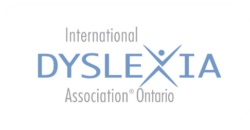This is a collection of passages designed to be used for fluency instruction in grade 8. Developed by Lisa Rogers, Laura Bross, Ayesatta Conteh, Teresa Oud, and Catherine Shawana, each passage focuses on a diverse changemaker from across Turtle Island – individuals who stood up […]
See how repeated reading, an evidence-based approach to building fluency, can be implemented in the classroom with this brief video from the Institute of Education Sciences.
This is a set of fluency grids including words from the UFLI Irregular Words and the High-Frequency Dolch and Fry Word Lists that are aligned with the UFLI scope and sequence. They can be used for a whole group, small group, partner, or independent to […]
Repeated reading is an instructional routine with plenty of research support. Learn more about how to use repeated reading in your classroom to build students’ fluency with this implementation guide from Dr. Stephanie Stollar.
It can be challenging to navigate the many subtests that can be used in universal screening! Skilled reading involves the integration of many subskills. This chart can be used to identify the most pressing need for instruction. For older students – start at the top […]
With a new curriculum, there are lots of new terms for both educators and families to navigate. This glossary contains high-level explanations for many terms used in the Language curriculum, with the goal of supporting partnerships with school and home.
In this well-organized book, the authors walk readers through six shifts that teachers of Grades 3-5 should consider when bringing reading science into the classroom: Reconsidering How Knowledge Impacts Comprehension, Rethinking the Role of Strategy Instruction in Learning to Comprehend, Recommitting to Vocabulary Instruction, Reclaiming […]
This quick read (56 pages) from well-respected researchers and authors Drs. Hasbrouck & Glaser is an educator-friendly overview of reading fluency: defining it, assessing it, teaching it and integrating it, all backed by an abundance of reading research. This book supports the fluency expectations found […]
Dr. Stephanie Stollar highlights ideas for using Oral Reading Fluency (ORF) assessment data for screening, designing instruction, and monitoring progress in the junior grades.
Dr. Timothy Shanahan explores possible reading profiles of students in grades 6 – 8 who struggle with reading, clarifying the value of focusing on decoding, fluency, or both.
This resource has been compiled by a group of Canadian language and literacy experts. It is organized into three primary segments. First, it highlights the essential information educators should possess about various research types, enabling them to stay well-informed and knowledgeable about the connection between […]
This facilitator’s guide is designed to assist professional learning communities (PLCs) in applying evidence-based strategies to help K-3 students acquire the language and literacy skills needed to succeed academically. This document is a support for educators watching the IES videos of foundational language and literacy […]




